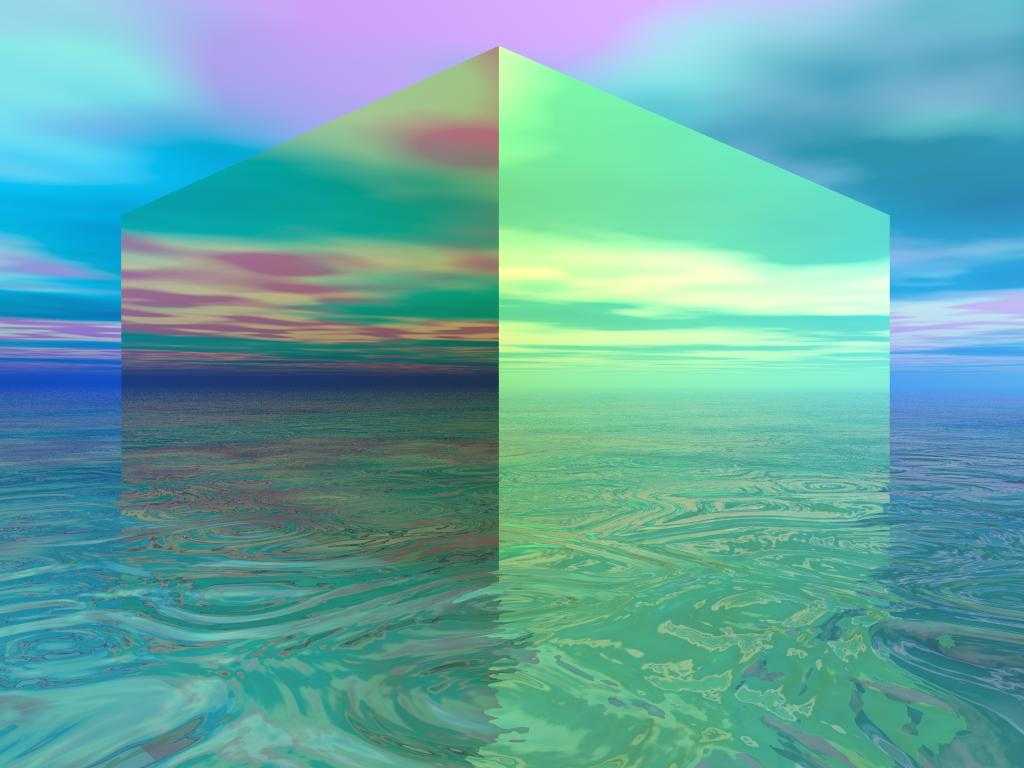Source(google.com.pk)
3d Animated Wallpapers Biography
Machinima ( /məˈʃiːnɨmə/ or /məˈʃɪnɨmə/) is the use of real-time 3D computer graphics rendering engines to create a cinematic production. Most often, video games are used to generate the computer animation. Machinima-based artists, sometimes called machinimists or machinimators, are often fan laborers, by virtue of their re-use of copyrighted materials (see below).
The practice of using graphics engines from video games arose from the animated software introductions of the 1980s demoscene, Disney Interactive Studios' 1992 video game Stunt Island, and 1990s recordings of gameplay in first-person shooter (FPS) video games, such as id Software's Doom and Quake. Originally, these recordings documented speedruns—attempts to complete a level as quickly as possible—and multiplayer matches. The addition of storylines to these films created "Quake movies". The more general term machinima, a portmanteau of machine cinema, arose when the concept spread beyond the Quake series to other games and software. After this generalization, machinima appeared in mainstream media, including television series and advertisements.
Machinima has advantages and disadvantages when compared to other styles of filmmaking. Its relative simplicity over traditional frame-based animation limits control and range of expression. Its real-time nature favors speed, cost saving, and flexibility over the higher quality of pre-rendered computer animation. Virtual acting is less expensive, dangerous, and physically restricted than live action. Machinima can be filmed by relying on in-game artificial intelligence (AI) or by controlling characters and cameras through digital puppetry. Scenes can be precisely scripted, and can be manipulated during post-production using video editing techniques. Editing, custom software, and creative cinematography may address technical limitations. Game companies have provided software for and have encouraged machinima, but the widespread use of digital assets from copyrighted games has resulted in complex, unresolved legal issues.
Machinima productions can remain close to their gaming roots and feature stunts or other portrayals of gameplay. Popular genres include dance videos, comedy, and drama. Alternatively, some filmmakers attempt to stretch the boundaries of the rendering engines or to mask the original 3-D context. The Academy of Machinima Arts & Sciences (AMAS), a non-profit organization dedicated to promoting machinima, recognizes exemplary productions through Mackie awards given at its annual Machinima Film Festival. Some general film festivals accept machinima, and game companies, such as Epic Games, Blizzard Entertainment and Jagex, have sponsored contests involving it.
Contents [hide]
1 History
1.1 Precedent
1.2 Quake movies
1.3 Generalization
1.4 Mainstream appearances
2 Production
2.1 Comparison to film techniques
2.2 Character and camera control
2.3 Limitations and solutions
3 Legal issues
3.1 Microsoft and Blizzard
4 Common genres
5 Competitions
6 See also
7 References
8 Further reading
9 External links
[edit]History
[edit]Precedent
1980s software crackers added custom introductory credits sequences (intros) to programs whose copy protection they had removed.[1] Increasing computing power allowed for more complex intros, and the demoscene formed when focus shifted to the intros instead of the cracks.[2] The goal became to create the best 3-D demos in real-time with the least amount of software code.[3] Disk storage was too slow for this; graphics had to be calculated on the fly and without a pre-existing game engine.[3]
In Disney Interactive Studios' 1992 computer game Stunt Island, users could stage, record, and play back stunts; as Nitsche stated, the game's goal was "not ... a high score but a spectacle."[4] Released the following year, id Software's Doom included the ability to record gameplay as sequences of events that the game engine could later replay in real-time.[5] Because events and not video frames were saved, the resulting game demo files were small and easily shared among players.[5] A culture of recording gameplay developed, as Henry Lowood of Stanford University called it, "a context for spectatorship.... The result was nothing less than a metamorphosis of the player into a performer."[6] Another important feature of Doom was that it allowed players to create their own modifications, maps, and software for the game, thus expanding the concept of game authorship.[7]
Doom's 1996 successor, Quake, offered new opportunities for both gameplay and customization,[8] while retaining the ability to record demos.[9] Multiplayer games became popular, almost a sport; demos of matches between teams of players (clans) were recorded and studied.[10] Paul Marino, executive director of the AMAS, stated that deathmatches, a type of multiplayer game, became more "cinematic".[9] At this point, however, they still documented gameplay without a narrative.[11]












3d Animated Wallpapers Biography
Machinima ( /məˈʃiːnɨmə/ or /məˈʃɪnɨmə/) is the use of real-time 3D computer graphics rendering engines to create a cinematic production. Most often, video games are used to generate the computer animation. Machinima-based artists, sometimes called machinimists or machinimators, are often fan laborers, by virtue of their re-use of copyrighted materials (see below).
The practice of using graphics engines from video games arose from the animated software introductions of the 1980s demoscene, Disney Interactive Studios' 1992 video game Stunt Island, and 1990s recordings of gameplay in first-person shooter (FPS) video games, such as id Software's Doom and Quake. Originally, these recordings documented speedruns—attempts to complete a level as quickly as possible—and multiplayer matches. The addition of storylines to these films created "Quake movies". The more general term machinima, a portmanteau of machine cinema, arose when the concept spread beyond the Quake series to other games and software. After this generalization, machinima appeared in mainstream media, including television series and advertisements.
Machinima has advantages and disadvantages when compared to other styles of filmmaking. Its relative simplicity over traditional frame-based animation limits control and range of expression. Its real-time nature favors speed, cost saving, and flexibility over the higher quality of pre-rendered computer animation. Virtual acting is less expensive, dangerous, and physically restricted than live action. Machinima can be filmed by relying on in-game artificial intelligence (AI) or by controlling characters and cameras through digital puppetry. Scenes can be precisely scripted, and can be manipulated during post-production using video editing techniques. Editing, custom software, and creative cinematography may address technical limitations. Game companies have provided software for and have encouraged machinima, but the widespread use of digital assets from copyrighted games has resulted in complex, unresolved legal issues.
Machinima productions can remain close to their gaming roots and feature stunts or other portrayals of gameplay. Popular genres include dance videos, comedy, and drama. Alternatively, some filmmakers attempt to stretch the boundaries of the rendering engines or to mask the original 3-D context. The Academy of Machinima Arts & Sciences (AMAS), a non-profit organization dedicated to promoting machinima, recognizes exemplary productions through Mackie awards given at its annual Machinima Film Festival. Some general film festivals accept machinima, and game companies, such as Epic Games, Blizzard Entertainment and Jagex, have sponsored contests involving it.
Contents [hide]
1 History
1.1 Precedent
1.2 Quake movies
1.3 Generalization
1.4 Mainstream appearances
2 Production
2.1 Comparison to film techniques
2.2 Character and camera control
2.3 Limitations and solutions
3 Legal issues
3.1 Microsoft and Blizzard
4 Common genres
5 Competitions
6 See also
7 References
8 Further reading
9 External links
[edit]History
[edit]Precedent
1980s software crackers added custom introductory credits sequences (intros) to programs whose copy protection they had removed.[1] Increasing computing power allowed for more complex intros, and the demoscene formed when focus shifted to the intros instead of the cracks.[2] The goal became to create the best 3-D demos in real-time with the least amount of software code.[3] Disk storage was too slow for this; graphics had to be calculated on the fly and without a pre-existing game engine.[3]
In Disney Interactive Studios' 1992 computer game Stunt Island, users could stage, record, and play back stunts; as Nitsche stated, the game's goal was "not ... a high score but a spectacle."[4] Released the following year, id Software's Doom included the ability to record gameplay as sequences of events that the game engine could later replay in real-time.[5] Because events and not video frames were saved, the resulting game demo files were small and easily shared among players.[5] A culture of recording gameplay developed, as Henry Lowood of Stanford University called it, "a context for spectatorship.... The result was nothing less than a metamorphosis of the player into a performer."[6] Another important feature of Doom was that it allowed players to create their own modifications, maps, and software for the game, thus expanding the concept of game authorship.[7]
Doom's 1996 successor, Quake, offered new opportunities for both gameplay and customization,[8] while retaining the ability to record demos.[9] Multiplayer games became popular, almost a sport; demos of matches between teams of players (clans) were recorded and studied.[10] Paul Marino, executive director of the AMAS, stated that deathmatches, a type of multiplayer game, became more "cinematic".[9] At this point, however, they still documented gameplay without a narrative.[11]
3d Animated Wallpapers

3d Animated Wallpapers

3d Animated Wallpapers

3d Animated Wallpapers

3d Animated Wallpapers

3d Animated Wallpapers

3d Animated Wallpapers

3d Animated Wallpapers

3d Animated Wallpapers

3d Animate Wallpapers

3d Animated Wallpapers

3d Animated Wallpapers

3d Animated Wallpapers
No comments:
Post a Comment